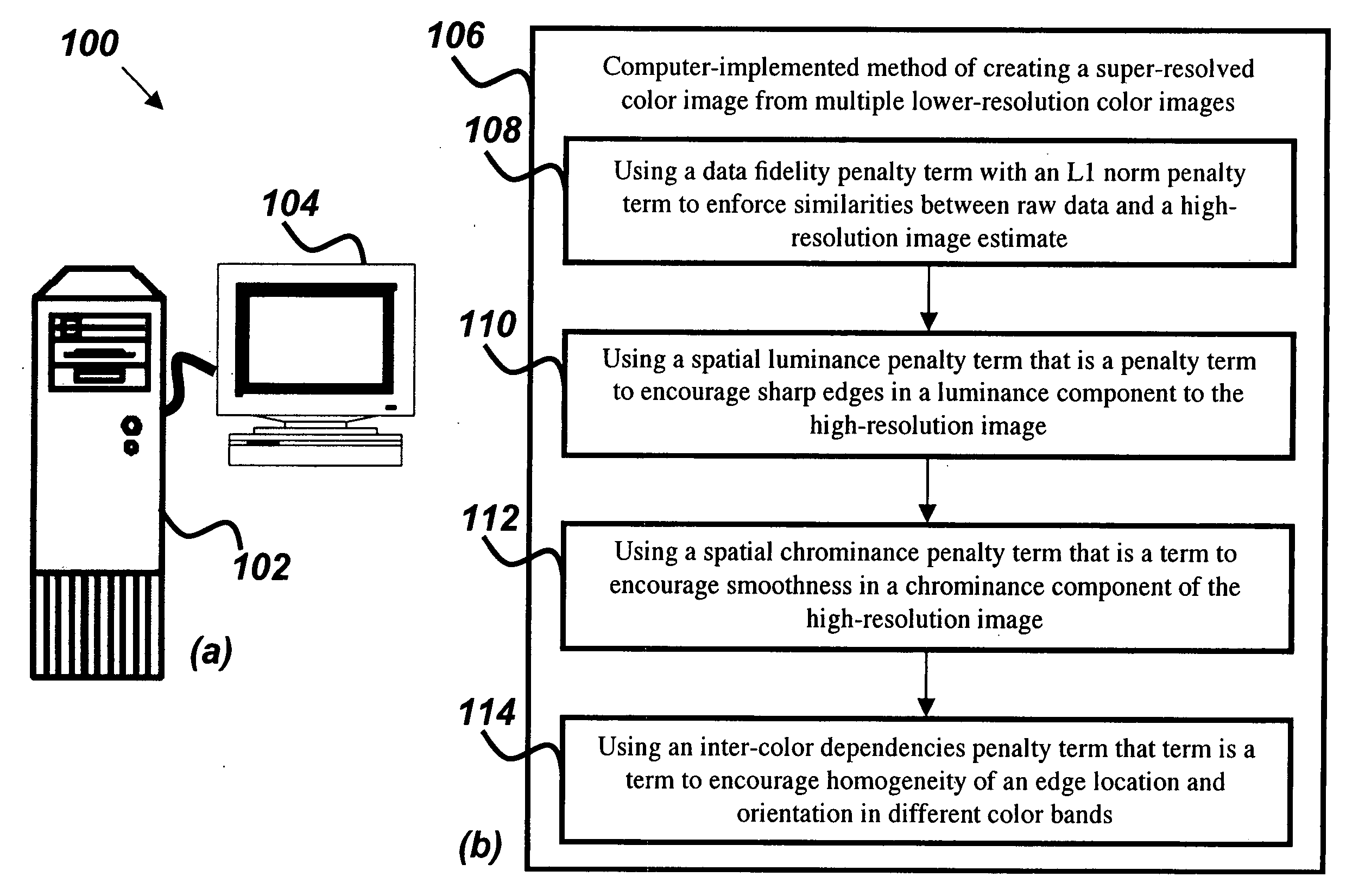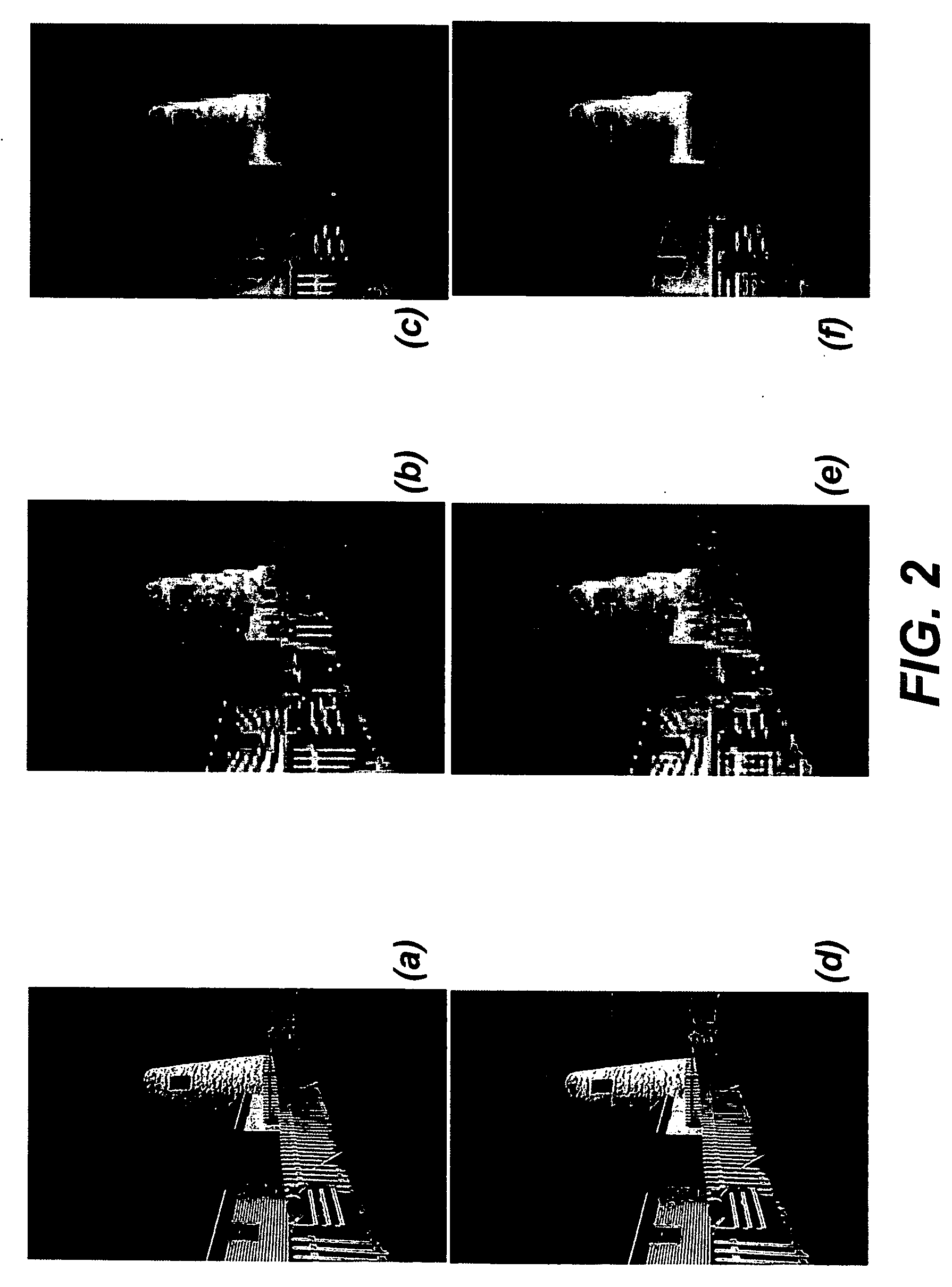System and method for robust multi-frame demosaicing and color super resolution
a multi-frame, demosaicing technology, applied in the field of color digital images, can solve the problems of little work addressing the problem of color super-resolution, the inherent limit of spatial resolution of digital cameras, and the inability to achieve the effects of promoting smoothness in chrominance components, promoting homogeneity of edge locations and orientations, and fast and robust hybridization
- Summary
- Abstract
- Description
- Claims
- Application Information
AI Technical Summary
Benefits of technology
Problems solved by technology
Method used
Image
Examples
Embodiment Construction
[0087] Although the following detailed description contains many specifics for the purposes of illustration, anyone of ordinary skill in the art will readily appreciate that many variations and alterations to the following exemplary details are within the scope of the invention. Accordingly, the following preferred embodiment of the invention is set forth without any loss of generality to, and without imposing limitations upon, the claimed invention.
[0088]FIG. 1 depicts an image formation process common to many commercial CCD cameras. Shown is a real world scene “X” converted to an image that undergoes deformations when captured. The captured real world scene first undergoes a motion distortion, or warp “F”, that may be caused by hand-held camera motion, where FIG. 1 depicts a vertical and horizontal motion distortion. Inherent to the camera are imperfections in the camera lens and charged coupled device (CCD) that distorts the real world wavefront, causing blur “H” in the recorded...
PUM
 Login to View More
Login to View More Abstract
Description
Claims
Application Information
 Login to View More
Login to View More - R&D
- Intellectual Property
- Life Sciences
- Materials
- Tech Scout
- Unparalleled Data Quality
- Higher Quality Content
- 60% Fewer Hallucinations
Browse by: Latest US Patents, China's latest patents, Technical Efficacy Thesaurus, Application Domain, Technology Topic, Popular Technical Reports.
© 2025 PatSnap. All rights reserved.Legal|Privacy policy|Modern Slavery Act Transparency Statement|Sitemap|About US| Contact US: help@patsnap.com



